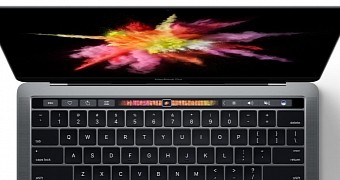Apple’s new MacBook series continues causing controversy these days, mostly around the battery life that this upgraded model provides, and now it’s Consumer Reports’ turn to step in and provide its own verdict.
In an announcement recently, the organization has revealed that Apple’s 2016 laptop is the first MacBook Pro that doesn’t receive its recommendation, explaining that battery life inconsistency is too much of a problem to be overlooked.
Consumer Reports explains that engineers tested three different MacBook Pros: two 13-inch models (one with a Touch Bar and another one without it), as well as a 15-inch model, all of them purchased from the official stores.
“In a series of three consecutive tests, the 13-inch model with the Touch Bar ran for 16 hours in the first trial, 12.75 hours in the second, and just 3.75 hours in the third. The 13-inch model without the Touch Bar worked for 19.5 hours in one trial but only 4.5 hours in the next. And the numbers for the 15-inch laptop ranged from 18.5 down to 8 hours,” the organization explains, adding that it repeated the tests several times.
According to its own testing procedure, Consumer Reports allows a laptop’s battery life to vary by 5 percent from one test to another, but it’s very clear that in the case of the MacBook, the differences were simply huge.
Consumer Reports said it performed battery tests on the laptops both before and after updating to macOS Sierra 10.12.2, but no difference was recorded. What’s more surprising, however, is that tests performed with Google Chrome actually led to better battery life, which is somewhat unexpected given the fact that native browsers are typically optimized for efficiency.
Battery tech on the new MacBook
People close to the matter say the controversy around the battery life of the new MacBook is mostly caused by Apple changing tech at the very last minute, after failing to implement a new battery layout under the hood of the new model.
It appears that Cupertino worked with partners on building the MacBook with several battery packs that took the shape of the empty spaces under the case, in an effort to offer a bigger battery without compromising dimensions, the form factor, and the weight. These battery packs were supposed to be connected to each other with flex cables and work just like a single unit.
But due to some issues, Apple decided to give up on this new system just before launching the MacBook, and instead picked an old tech that was previously offered on the MacBook as well.
As a result, the device comes with new hardware, but with old battery technology, so reduced battery life was more or less to be expected.
Of course, the bigger problem is the inconsistency between these tests, mostly when running the same processes on the same devices, but we’ll see what Apple has to say about this and if there’s a way to repair it.

 14 DAY TRIAL //
14 DAY TRIAL //